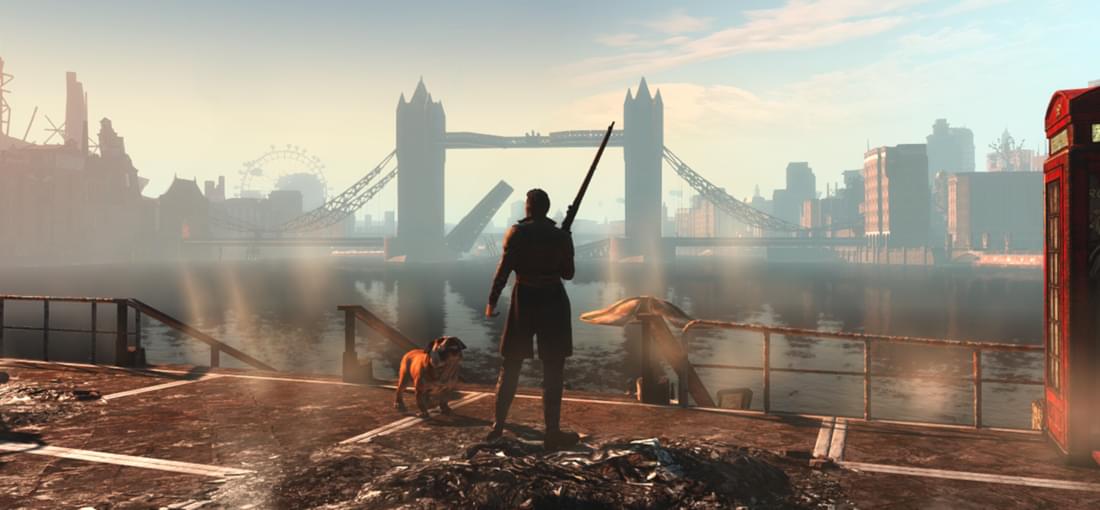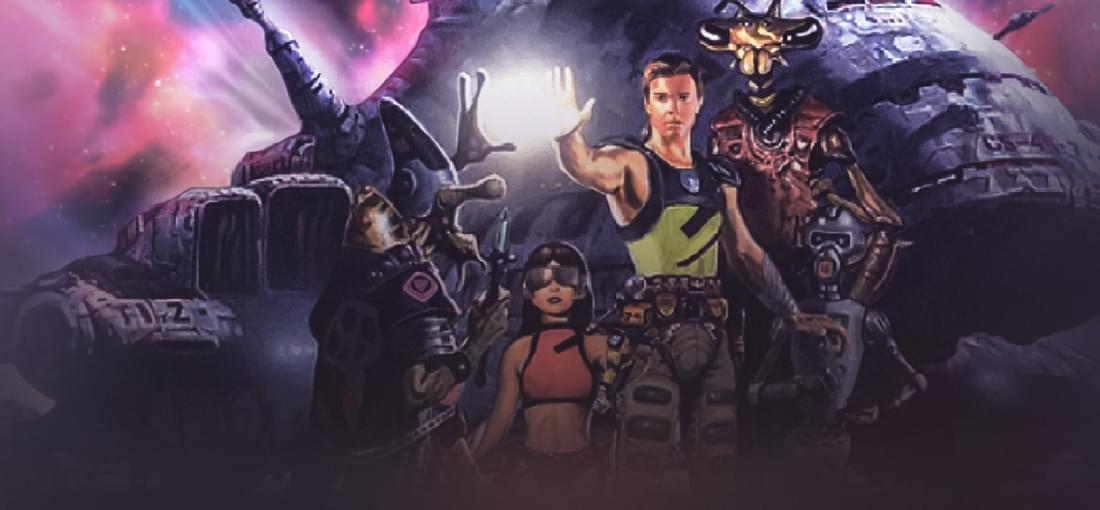


I'm actually not a huge fan of Fallout 4 - the game's story and setting didn't do it for me quite the same way as the earlier entries - and I wrote it off as a game I didn't really need to play again. But this mod had me purchase a GOG build of Fallout 4 GOTY and give it another go, because I was eager to see what a team of modders like FOLON Team could do by taking the game overseas and infusing a bunch of new ideas into the Fallout universe. And wow - they really went all out! This is the freshest take on Fallout I've experienced since New Vegas, and I can forgive the bugs and the loading times (which are typical of any Bethesda Fallout game when it launches on the PC) if it means getting to walk around a post-apocalyptic rendering of London for dozens of hours and enjoy all the amenities of what feels like a paid DLC or standalone release. Those who feel the need to knock this game for performance issues really ought to be knocking the core game - this mod is well worth the time and relatively minor amount of trouble required to set it up, and it breathes fresh life into an IP that's showing signs of peaking. I already owned Fallout 4 GOTY on Steam, but my advice is to pick up the GOG build (currently on sale) and install it as a separate game and use the way-too-easy installer to apply the mod. You can't use other mods with Fallout: London, and so if you want to play Fallout 4 with other mods, you'll need two different installs. I would also add that this is the easiest Fallout modding experience you'll ever have; the installer does everything! Thanks, GOG, for making this so easy and fun!

If you are excited that GOG.com now has Deathtrap Dungeon, it's because of the following reasons: 1. Nostalgia And that's about it. The original game was poor in quality even for its time. It was one of the original Eidos titles that followed in the wake of the vastly superior Tomb Raider, and it pretty much gets everything wrong -- poor level design, awful controls, dull character design (with prominent boobs!) and little replayability. At the time, it was considered action/horror, but the genre has drastically evolved since then. The title might suggest that this game is something in the vein of Orcs Must Die! or Dungeon Keeper. But don't be fooled -- it's a fairly dull hack and slash from the era when blocky 3D graphics were still a novelty.

I was pleasantly surprised by the otherwise mediocre Lands of Lore 3 when it debuted because while it began as a typical fantasy RPG in the vein of the first two games (and thankfully, minus the annoying transformation gimmick of the second), it quickly diverged into a patchwork of different worlds that touched on sci-fi and horror. If nothing else, it was interesting. Like its predecessor, LOL3 is a first person RPG set in a 3D world, and though the graphics are blocky and dated and the combat is simplistic, the game does feature an adventure worth undertaking. The game begins in a castle called Gladstone Keep, and if you only play the first couple of hours, you'll find yourself wondering why you should even bother to keep playing. You do acquire a floating familiar that looks like the top half of a suit of armor, but the voice acting is really hammy and the characters are uninteresting. Eventually, you enter a rift that takes you to a lava world, and then another that takes you to a frozen world. This is all fairly typical fantasy fare. Then, things start to get nutty. You visit the hive-world of the floating, alien-like creatures called the Ruloi. You visit a strange horror world complete with a haunted house and weeping statues. And then you wander through a desert and emerge at... an old base sporting the Nod logo from Command and Conquer? And where your chief enemy is the Nod AI known as CABAL? As the realms get stranger, the game begins to lose any sense of its plot. It feels like a bunch of different games got slapped together into one. The promise of the first game's fantasy world is completely lost here, and many of the unfortunate choices from the second game (blocky levels, cheap deaths, persistent ceilings) are preserved due to the very limited 3D engine. The villain, Jakel, looks like the Ghost of Christmas Future and is about as personable. The ending is bewildering and anticlimactic. The game gets pretty tedious once you get through the out-of-place (though genuinely interesting) Nod base. The fully-acted movies from the second game are replaced with bad CG models in this game. And the graphics are particularly poor considering that the game was released in 1999 alongside far better games like System Shock 2, Unreal Tournament and the Half-Life expansions. Even if you liked the first two games in the series, you'll probably find this one to be less of a follow-up and more of a guilty pleasure. It's unfortunate that the Lands of Lore series never really rose up to become anything great, but maybe this was the best Westwood Studios could do amidst their financial difficulties. Still, it's an interesting, if flawed, gem, and worth a play if you really like 3D RPGs from that era.

The original Starflight was a unique CRPG for its day, and it's still great now - it involves taking a crew of humans, mechans and aliens through a large galaxy as you gradually uncover the mystery of why solar flares are occurring in solar systems with inhabited worlds. Along the way, you mine minerals, encounter alien races, look for worlds that can be colonized and search for artifacts that can give you an edge in your exploration. The story's climax is intriguing, and even though the game never technically "ends," there is a definite conclusion to the central mystery. Starflight is rather well-known for being a game that offers little in the way of direction; you really have to piece together a lot of pieces of information and keep careful track of coordinates given to you in messages, diplomatic endeavors and cryptic ruin remains. The game's star chart (originally packed in the box) also has some clues. Starflight 2 is a lesser game than the original in some ways; it's a little bit more focused on the series's odd sense of humor and also feels less epic than the original. But it improves on the concept by focusing on trade routes (rather than mere mineral mining) and adding inhabited worlds to the fray. It also features 256-color graphics, which makes it look less primitive than the original. Both of these games are fantastic and well worth the dozens of hours required to fully explore them. Don't cheat yourself by using a walkthrough that will tell you all of the flux locations, colonizable worlds and artifact coordinates; you'll enjoy each game so much more if you keep a notebook handy and let the stories guide you on what to do next. Both of these games have influences that can be heavily felt in the Star Control, Mass Effect and Space Rangers games. But Starflight is also an unparalleled experience that has yet to be exceeded by any of its offshoots.